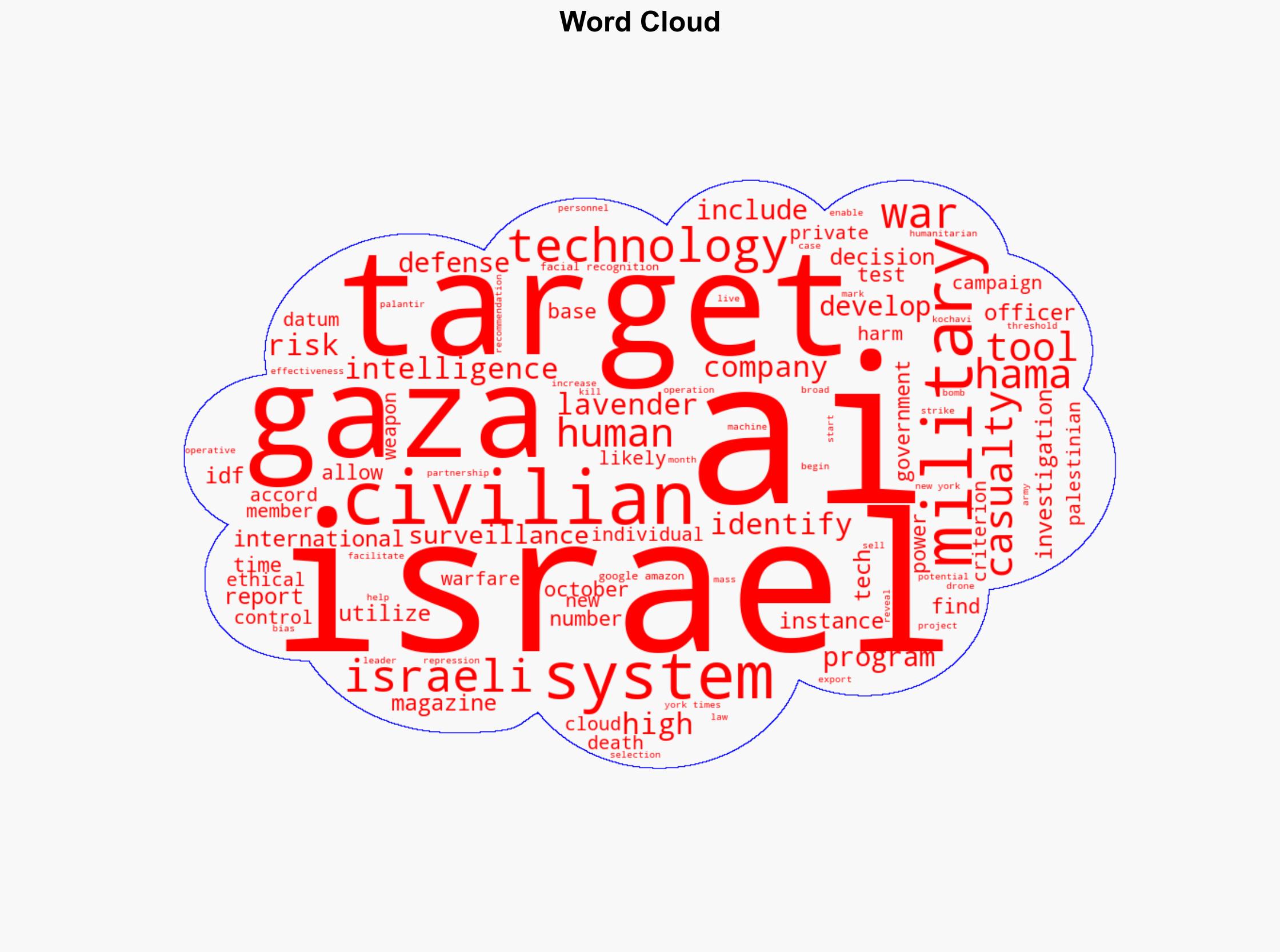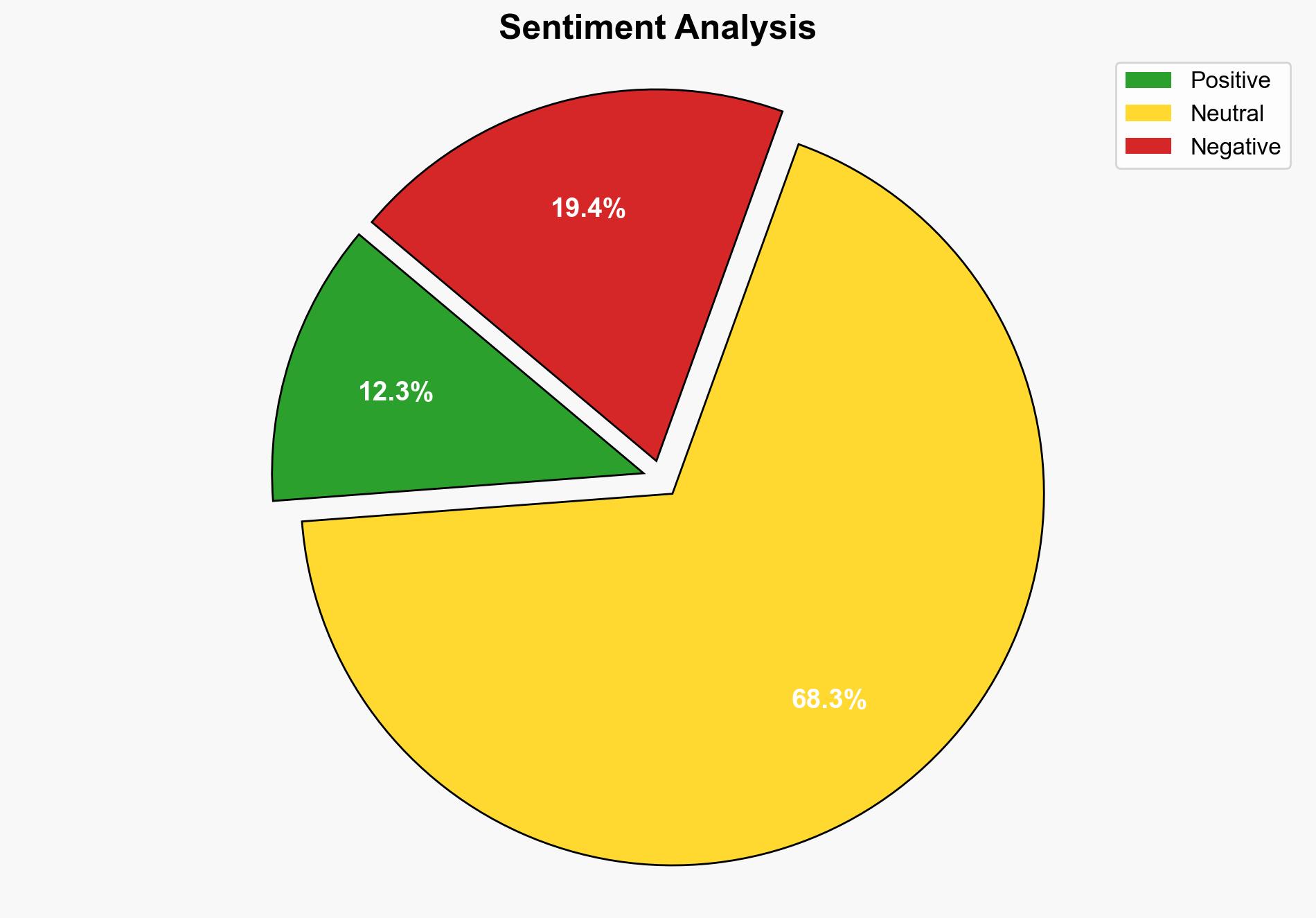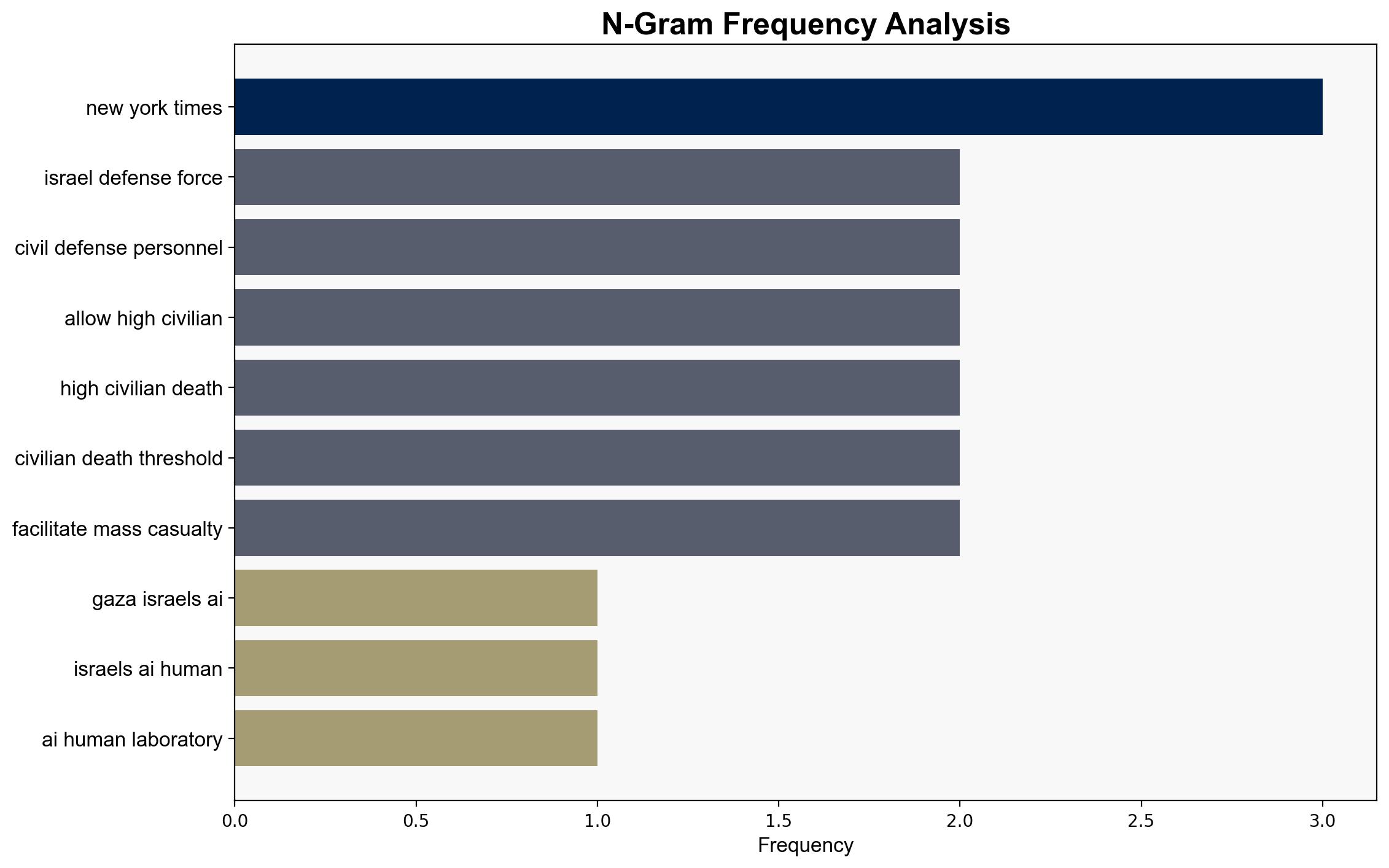Gaza AI Human Laboratory – Thecairoreview.com
Published on: 2025-09-01
Intelligence Report: Gaza AI Human Laboratory – Thecairoreview.com
1. BLUF (Bottom Line Up Front)
The strategic assessment indicates a high likelihood that Israel’s deployment of AI in military operations in Gaza is primarily aimed at enhancing operational efficiency and testing new technologies for future global markets. However, this raises significant ethical and legal concerns regarding civilian safety and international humanitarian law compliance. The most supported hypothesis is that Israel is using Gaza as a testing ground for AI technologies, with a moderate confidence level. Recommended action includes international diplomatic engagement to address ethical concerns and potential regulation of AI in military contexts.
2. Competing Hypotheses
1. **Hypothesis A**: Israel is using AI in Gaza primarily to improve military efficiency and effectiveness, with the secondary goal of testing these technologies for future export and global leadership in AI military applications.
2. **Hypothesis B**: Israel’s primary goal is to use AI to reduce civilian casualties and enhance precision in military operations, with testing and export as secondary considerations.
Using Analysis of Competing Hypotheses (ACH), Hypothesis A is better supported due to the emphasis on rapid target generation and the showcasing of AI capabilities to international allies, suggesting a strategic focus on technological leadership and market expansion.
3. Key Assumptions and Red Flags
– **Assumptions**:
– Israel’s AI systems are assumed to be capable of significantly reducing collateral damage.
– The international community will respond to ethical concerns with regulatory measures.
– **Red Flags**:
– Lack of transparency in AI decision-making processes.
– Potential bias in AI algorithms leading to misidentification of targets.
– High civilian casualty rates contradict claims of precision targeting.
4. Implications and Strategic Risks
The integration of AI in military operations could lead to accelerated conflict dynamics and increased geopolitical tensions, particularly if perceived as violating international norms. The risk of AI proliferation without adequate safeguards could destabilize regional security and provoke retaliatory measures. Economically, successful AI demonstrations could bolster Israel’s defense exports but may also trigger a global arms race in AI technologies.
5. Recommendations and Outlook
- Engage in multilateral discussions to establish international norms and regulations for AI use in military operations.
- Monitor AI technology transfers and exports to prevent misuse by non-state actors.
- Scenario Projections:
- Best: International consensus on AI regulations reduces conflict escalation risks.
- Worst: Unregulated AI proliferation leads to increased civilian casualties and regional instability.
- Most Likely: Continued AI development with incremental regulatory progress and ongoing ethical debates.
6. Key Individuals and Entities
– Aviv Kochavi
– Israeli Defense Forces (IDF)
– NATO Military Committee
7. Thematic Tags
national security threats, cybersecurity, counter-terrorism, regional focus





